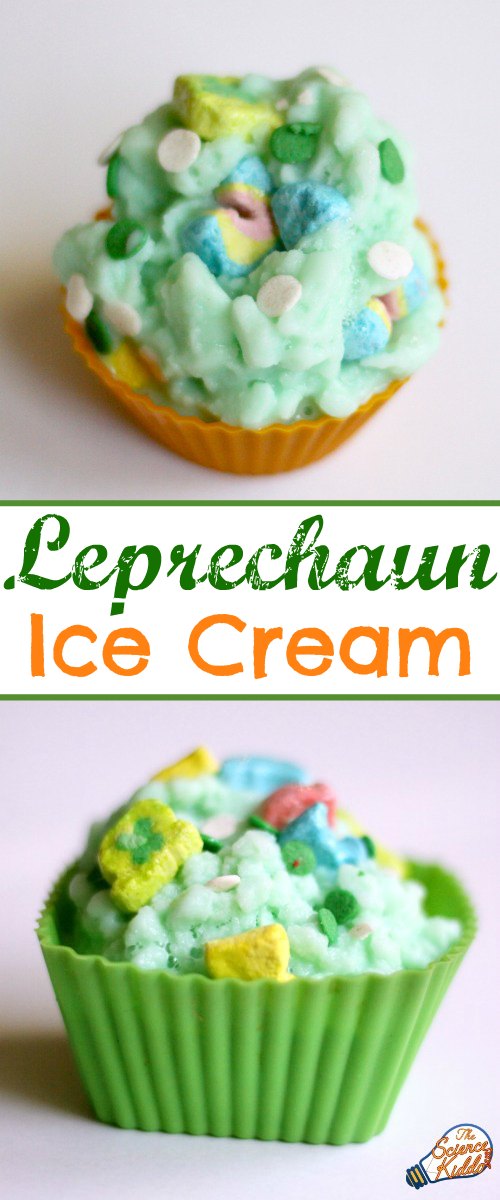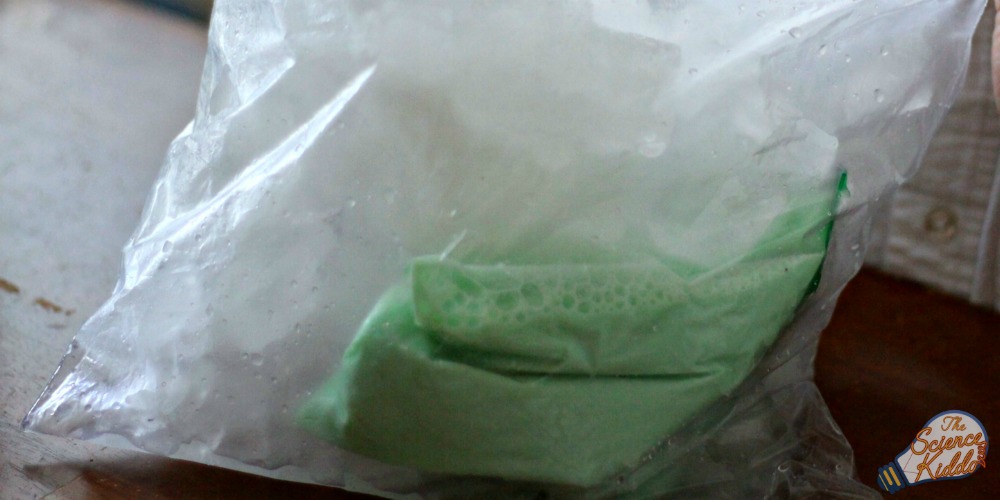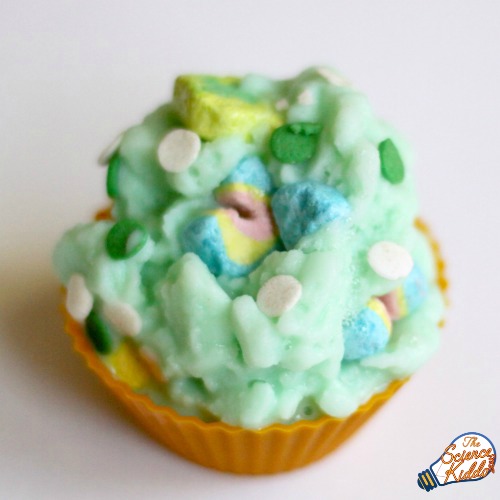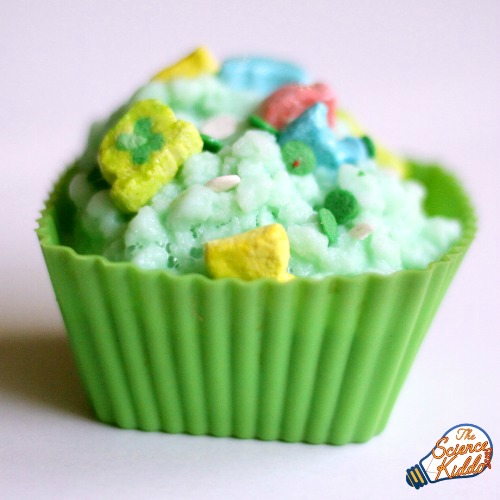This St. Patrick’s Day surprise your kids with tasty leprechaun ice cream at the end of the rainbow. Making this sweet treat also teaches them cool science!
*This post contains affiliate links. Please see our disclosure policy.
This St. Patrick’s Day surprise your kids with tasty leprechaun ice cream at the end of the rainbow. Not only will you enjoy a sweet treat together, making ice cream is also a fantastic way to learn some really cool science! Watch out, though, once your kids learn that you can make ice cream at home with ingredients you already have they’ll beg you to make it again and again!

Materials
One small Ziploc baggie (quart or sandwich size)
1/2 C. milk (whole works best, but any variety will be fine)
1 Tbsp. sugar
1/4 tsp. vanilla
Green food coloring
8-10 C. Ice
6 Tbsp. salt
Dehydrated marshmallows (Guys, you can buy a bag full of JUST the marshmallow charms from Amazon! Seriously, a dream come true.)
Sprinkles, or whatever other toppings you want!
Make Leprechaun Ice Cream
- Add milk, sugar, vanilla, and 2-3 drops of green food coloring to the small baggie. Seal the bag, being careful to release excess air.
- Add ice and salt to the bigger baggie.
- Place the small baggie into the large bag of ice and salt. Seal the large bag. (See the photo below.)

- Shake for 5-10 minutes or until the milk mixture turns into a soft solid.
- This is the tricky part: Open up the large bag, remove the small bag and rinse it off quickly in cold water (pay special attention to rinse off the opening). You don’t want any of the salt water getting into your sweet and creamy homemade leprechaun ice cream!
- Either grab a spoon and eat your ice cream right out of the bag, or pour your ice cream into a bowl. Top with dehydrated marshmallows and/or sprinkles or other toppings and enjoy!
The Science of Making Leprechaun Ice Cream
To make any variety of homemade ice cream you need to partially freeze your milk or cream. You can just stick milk in the freezer, but that freezes it solid. When you try to eat the ice cream it’s no longer creamy and smooth. It gets all icy and crystal-y and weird.

Water freezes at 32°F, but because milk contains proteins and fat it freezes at a lower temperature. This means that trying to freeze milk with ice cubes won’t work either. You need to add a special ingredient to your ice cubes to make a mixture that is colder even than ice alone. Ready for the secret ingredient? I’ll give you a few clues. It’s white. It’s something almost everyone has in their kitchen. It tastes yummy on popcorn with butter. It’s….SALT!
We talked about the magical science of how salt and ice cubes work when we did our Fishing for Ice experiment and when we made our delicious fruity slush. When you add salt to ice, it lowers the freezing point of the ice, making it melt. You are left with a salty-icy-watery mixture that is much colder than 32°F. The temperature of your salty mixture is close to 0°F! (You can verify this with a thermometer.) This temperature is cold enough to freeze milk into homemade ice cream in less than 10 minutes.



Thank you for this experiment. I did it with my son and he enjoyed it! Looking for more creative ideas from the science kitchen.
So glad to hear it! Thank you for letting me know.
My kids and I used this as a homeschool experiment the week of Sat. Patrick’s Day and they loved it! They love do anything in the kitchen so this was definitely a BIG HIT! Thank you for the idea!